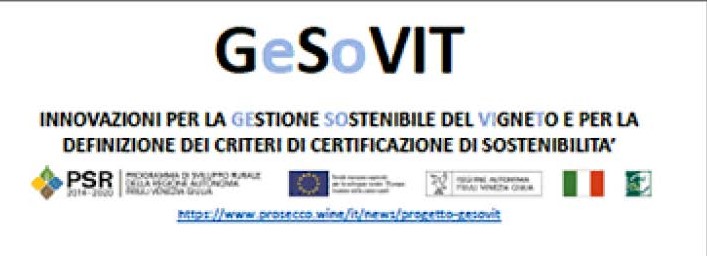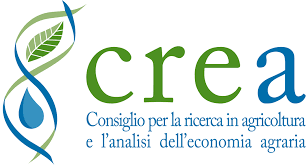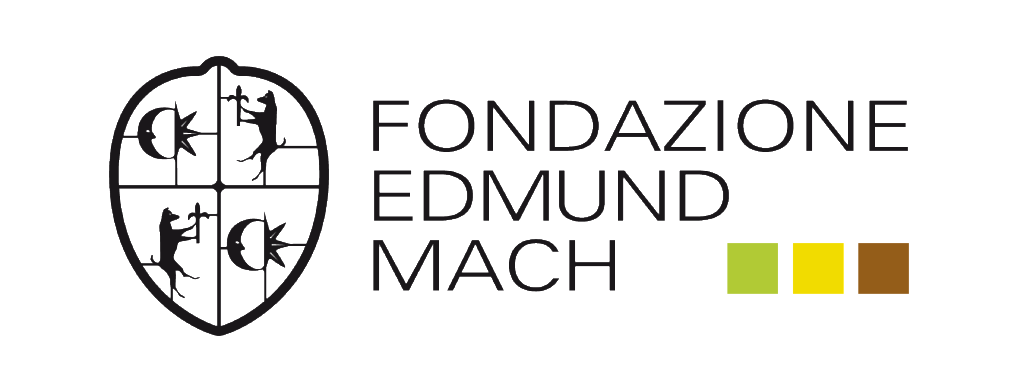Aromatic and polyphenolic quality of grapes and wines

Current changes in ecoclimatic indicators can cause significant variations in vine phenology and grape ripening. Climate change modifies various abiotic factors (e.g. temperature, solar radiation, water availability) during the vine growth cycle, having a direct impact on the phenological phases of the vine, modulating the metabolic profile of the berries and activating the synthesis and accumulation of different compounds in the skin of the grapes, with consequences on the composition of the grapes. The increase in average and extreme temperatures of the summer months, as the main consequence of climate change, as well as changes in the pattern of rainfall during the ripening phase, lead to a greater concentration of sugars and a general change in the acid profile of the grapes , but also to the modification of the profiles of secondary metabolites.
Therefore, in several viticultural areas, maturation occurs when both the color and aroma profiles can be negatively influenced, which in the wine translates into a loss of typicality and expression of the terroir. Due to climate changes, a discrepancy is also noted between the different technological, phenolic and aromatic quality parameters since they are regulated by different biosynthetic pathways and therefore are influenced differently. Significant variations observed in temperature and rainfall patterns or conditions of limited water availability and high temperatures, which are lately characterizing the second part of berry development, can cause rapid development of individual berries during the hottest part of the season, the which can negatively influence the secondary metabolites that determine the color and aroma and therefore the quality of the grapes and wine.
Solutions
Radiation and temperature
- low radiation and low temperatures: high C6 compounds and metoxypyrazines and (-)-rotundone
- high radiation generally may increase C13 norisoprenoids but in the last stage of ripeness high radiation and temperature in the fuit zone may decrease grape aroma compounds
- Early exposure to light before veraison: carotenoids and flavonoids were among the compounds most affected by higher levels of radiation. The fruit environment strongly regulates the production of carotenoids and flavonoids and it has been found that early exposure has a greater impact on their concentrations than treatments performed during or after ripening.
- Avoid defoliation during the high T° period: While higher selected carotenoids, flavonoids and free aromatic compounds were observed in the defoliated treatments, the higher temperatures appear to have been detrimental to the adaptation of the berries by limiting the production of these compounds and increasing their degradation rate, which further underlines the need to carry out activities such as defoliation when temperatures are still mild.
- Avoid clusters with T° in the last phase of maturation: Previous research has indicated that microclimatic conditions, which vary depending on the vintage, the appearance of the vineyard and the vigor of the vine, can influence the timing of the peak concentration of norisoprenoid precursors while the high temperatures during the last stages of grape ripening evidently lead to a decrease in total norisoprenoids. Radiation and extremely high temperatures can have negative effects. Grapes are also subject to burns if exposed directly to the sun, negative effects especially for free terpenes,  ; in aromatic varieties, during over-ripening and possible drying, they favor the accumulation of terpenes in glycosidic form, which will be slowly released during aging. Leave a few extra leaves to protect the bunches
-
biostimulants, hedging products
In a context of climate change and excessive use of agrochemicals, sustainable approaches for environmental and human health such as the use of biostimulants in viticulture represent a potential option against abiotic and biotic threats. Biostimulants are organic compounds, microbes, or a combination of both, that stimulate the vital processes of the plant, allowing for high yields and good quality products. The application of these natural compounds has effects on plant physiology, pathogen development and leads to a different expression of plant genes responsible for the activation of metabolic pathways and plant defense responses. In the vine, they can trigger an innate immune response that leads to the synthesis of secondary metabolites, key compounds for the organoleptic properties of grapes and wines. Biostimulants, therefore, can improve the aromatic parameters of grapes, but their effect is different based on the product, the frequency and timing of application, and the chemical class of the compounds involved and to the cultivar examined.
- medium-late application of the seaweed extract of Ascophyllum nodosum can be a simple way to favour chromatic and chemical proprieties of grapes and wineshedging products such as kaolin can protect the berry exocarp from light stress
- products that can enchant polyphenolic and/or aromatic content: Methyl Jasmonate, abscisic acid, chitosan, yeast extract
Water stress
- avoid water stress: to maintain free terpenes in the Moscato ;maintain correct grassing under the row and in the row. In the sub-row if there is humidity leave more grass, if there is greater drought, remove it. The plant must feed on water in a balanced way. Working the soil between the rows is another important aspect: for example to keep it soft while cutting the grass by "stirring" so that it becomes a nutritional element
-
increased content of organic substance in the soil, and with the presence and abundance of mycorrhizae, i.e. symbiosis between the roots and some fungi, which function as an extension of the system radical or by a consortium of microorganisms
- water deficit : higher levels of esters (realted more to nitrogen status of the soil) and bound glycoconjugates of major aroma compounds in wines (in particular terpenols and C13-norisoprenoids)
Canopy management
- under warm temperatures, canopy management that results in partial shading of grape bunches may limit the risk of cooked fruit and oxidized prune aromas.
- Moderately low vine nitrogen status and cover cropping limit green aromas in cool and wet climates through reduced vigour and improved bunch exposure (van Leeuwen et al., 2020).
- Nitrogen deficiency and excessively competitive cover cropping should be avoided in warm climates, because these practices favour bunch exposure, which enhances the development of cooked fruit and oxidized prune aromas
References
Monteiro, E.; Gonçalves, B.; Cortez, I.; Castro, I. The role of biostimulants as relievers of biotic and abiotic stresses in grapevine: a review. Plants (2022), 11, 396
Cataldo E. Fucile M., Mattii G. B. Biostimulants in viticulture: a sustainable approach against biotic and abiotic stresses. Plant Review (2022), 11, 162. Colla G.; Rouphael, Y., Biostimulants in horticulture. Skiing. Ortico. (2015), 196, 1-134
van Leeuwen, C., Barbe, J.-C., Darriet, P., Destrac-Irvine, A., Gowdy, M., Lytra, G., … Thibon, C. (2022). Aromatic maturity is a cornerstone of terroir expression in red wine: This article is published in cooperation with Terclim 2022 (XIVth International Terroir Congress and 2nd ClimWine Symposium), 3-8 July 2022, Bordeaux, France. OENO One, 56(2), 335–351.https://doi.org/10.20870/oeno-one.2022.56.2.5441
van Leeuwen, C., Barbe, J.-C., Darriet, P., Geffroy, O., Gomès, E., Guillaumie, S., et al. (2020). Recent advances in understanding the effect of terroir on the aromas of grapes and wines. OENO One 54, 985. doi: 10.20870/oeno-one.2020.54.4.3983.
Asproudi, A., Ferrandino, A., Bonello, F., Vaudano, E., Pollon, M., and Petrozziello, M. (2018). Key norisoprenoid compounds in wines from grapes harvested early in view of climate change. Food Chemistry 268, 143-152. doi: 10.1016/j.foodchem.2018.06.069.
Frioni, Tommaso, et al. "Effects of a biostimulant derived from the brown seaweed Ascophyllum nodosum on ripening dynamics and fruit quality of grapevines." Scientia Horticulturae 232 (2018): 97-106.
van Leeuwen, C., & Darriet, P. (2016). The impact of climate change on viticulture and wine quality. Journal of Wine Economics 11, 150-167.
Asproudi, A., Petrozziello, M., Cavalletto, S., and Guidoni, S. (2016). Precursors of grape aroma in cv. Nebbiolo influenced by the microclimate of the vine. Food Chemistry 211, 947-956.
De Orduna, R. M. (2010). Effects associated with climate change on the quality and production of grapes and wine. Food Research International 43, 1844-1855.
Mori, K., Goto-Yamamoto, N., Kitayama, M., & Hashizume, K. (2007). Loss of anthocyanins in red wine grapes at high temperature. Journal of experimental botany 58, 1935-1945.
Koundouras, S., Marinos, V., Gkoulioti, A., Kotseridis, Y., & van Leeuwen, C. (2006). Influence of vineyard location and vine water status on fruit maturation of nonirrigated cv. Agiorgitiko (Vitis vinifera L.). Effects on wine phenolic and aroma components. Journal of Agricultural and Food Chemistry, 54(14), 5077-5086. https:doi.org//10.1021/jf0605446
Written by Andriani Asproudi
This is a work in progress...
Relations
- Réseau
- Liste
- Géographique
- Plus
GeSoVit - Innovazioni per la gestione sostenibile del vigneto e per la definizione dei criteri di certificazione di sostenibilità ambientale per l'azienda vitivinicola
Adozione di nuove pratiche per una generale riduzione dell’impatto ambientale e protocolli propedeutici e funzionali per la certificazione di sostenibilità ambientale dell’azienda vitivinicola
- Plus
CREA - Consiglio per la ricerca in agricoltura e l'analisi dell'economia agraria
CREA is the leading Italian pubblic research organization dedicated to the agri-food supply chains. It is supervised by the Ministry of Agricultural, Food and Forestry Policies
- Plus
FEM - Fondazione Edmund Mach
The Edmund Mach Foundation promotes and carries out research, scientific experiments, education and training activities as well as providing technical assistance and extensions services to companies
- Plus
GRAPE AROMA PRECURSORS IN CV. NEBBIOLO AS AFFECTED BY VINE MICROCLIMATE
Investigation of the influence that bunch microclimate may exert on the content of some C13-norisoprenoid precursors in Nebbiolo grapes cultivated in hilly vineyards in Piedmont, Italy.
- Plus
INRAE - Institut national de recherche en agriculture, alimentation et environnement
INRAE, l’Institut national de recherche en agriculture, alimentation et environnement est né le 1er janvier 2020. Il est issu de la fusion entre l’Inra et Irstea
- Plus
KEY NORISOPRENOID COMPOUNDS IN WINES FROM EARLY-HARVESTED GRAPES IN VIEW OF CLIMATE CHANGE
The link between grape ripening, seasonal trend and wine aroma was investigated in Barbera and Pinot Noir wines produced with early harvested grapes cultivated in Piedmont, Italy



